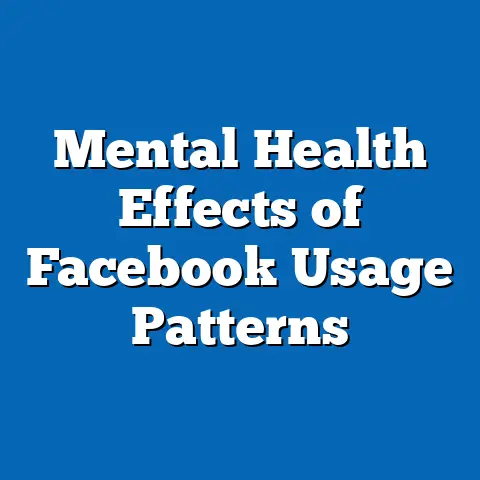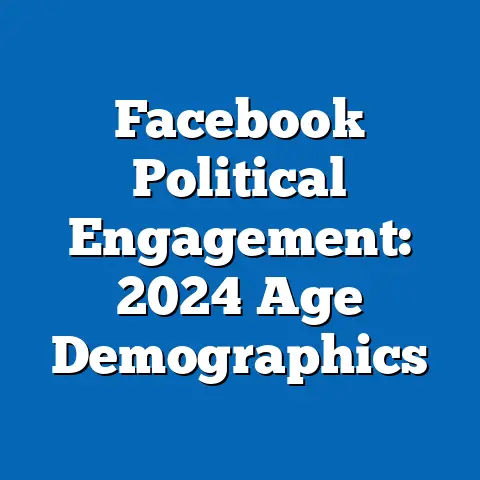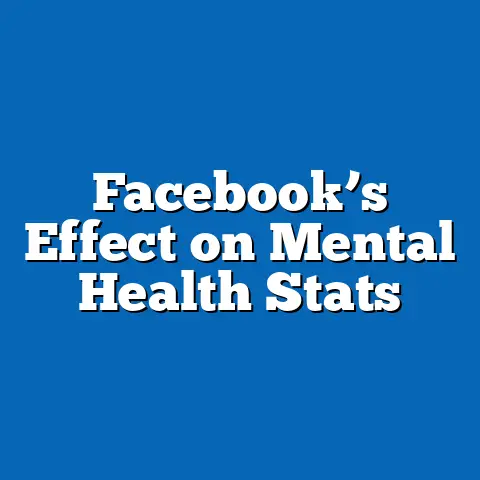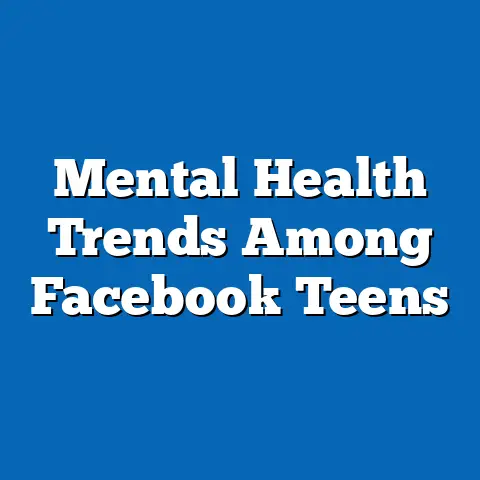Data Privacy Laws vs. Facebook Compliance
In the digital age, data privacy has emerged as a critical battleground between individual rights and corporate interests, with Facebook (now Meta) often at the center of the storm. A staggering 87 million user profiles were compromised in the 2018 Cambridge Analytica scandal, highlighting the vulnerability of personal data on social media platforms, according to a report by the Federal Trade Commission (FTC). This incident, among others, has fueled global calls for stricter data privacy regulations, with 71% of Americans expressing concern over how companies like Facebook handle their personal information, as per a 2022 Pew Research Center survey.
Demographically, younger users (18-29) are more likely to share personal data online, with 59% admitting to oversharing, compared to just 23% of those aged 50 and older, per the same Pew study. Historically, data privacy laws have evolved from rudimentary frameworks in the 1970s to comprehensive regulations like the European Union’s General Data Protection Regulation (GDPR) in 2018, which imposed fines of up to €20 million or 4% of annual global turnover for non-compliance. Looking ahead, projections from Gartner suggest that by 2025, 80% of global organizations will face at least one data privacy violation lawsuit, driven by increasing regulatory scrutiny and user awareness.
This article delves into the tension between data privacy laws and Facebook’s compliance efforts, analyzing key trends, demographic impacts, historical shifts, and future implications. We will explore how global regulations have reshaped the tech giant’s policies, the statistical landscape of user trust, and the ongoing challenges of balancing innovation with accountability.
The Growing Concern: Data Privacy as a Global Issue
Data breaches and misuse of personal information have become commonplace in the 21st century, eroding public trust in tech giants like Facebook. According to a 2023 report by the Identity Theft Resource Center (ITRC), data breaches in the U.S. alone affected over 353 million individuals in 2022, a 68% increase from 2020. Social media platforms, with their vast troves of user data, are prime targets, and Facebook has been implicated in multiple high-profile incidents.
The public’s unease is palpable— a 2022 Cisco Consumer Privacy Survey found that 81% of global respondents feel they have little control over how their data is used by companies. This sentiment is particularly acute among users of platforms like Facebook, where personal information fuels targeted advertising, the company’s primary revenue stream. In 2021, Meta reported $114.9 billion in ad revenue, underscoring the financial stakes of data collection practices, as per their annual SEC filing.
The clash between user privacy and corporate profit motives has spurred governments worldwide to enact stringent laws. Yet, compliance remains a contentious issue, as evidenced by Meta’s €1.2 billion fine in 2023 under GDPR for transferring EU user data to the U.S. without adequate safeguards, according to the European Data Protection Board (EDPB). This section sets the stage for a deeper analysis of how data privacy laws are reshaping the landscape for platforms like Facebook.
Key Statistical Trends: The Scale of Data Privacy Challenges
Global Regulatory Growth
The proliferation of data privacy laws reflects a global awakening to the risks of unchecked data collection. As of 2023, over 130 countries have enacted data protection legislation, a sharp rise from just 40 in 2010, according to the United Nations Conference on Trade and Development (UNCTAD). The GDPR, implemented in 2018, remains the gold standard, influencing laws like Brazil’s LGPD (2020) and California’s CCPA (2020), which governs companies handling data of over 500,000 state residents annually.
Fines for non-compliance are mounting. Since GDPR’s inception, European regulators have imposed over €2.9 billion in penalties, with tech giants like Meta accounting for a significant share, per Privacy Affairs data. In 2022 alone, Meta faced €405 million in fines for violating children’s privacy on Instagram, a subsidiary platform, highlighting the breadth of regulatory oversight.
User Data Exposure
The sheer volume of data at risk on platforms like Facebook is staggering. With 2.9 billion monthly active users as of Q2 2023, according to Meta’s investor reports, the platform holds a treasure trove of personal information, from location data to behavioral patterns. A 2021 study by the Norwegian Consumer Council found that 70% of apps, including Facebook, share user data with third parties, often without explicit consent.
Data breaches compound these risks. The 2018 Cambridge Analytica scandal exposed how data from 87 million users was harvested for political manipulation, as documented by the FTC. More recently, a 2021 breach leaked personal details of 533 million Facebook users across 106 countries, per Business Insider, illustrating persistent vulnerabilities despite promised reforms.
Public Trust Metrics
Trust in social media platforms to protect user data is at an all-time low. A 2023 Edelman Trust Barometer report revealed that only 30% of global respondents trust tech companies with their personal information, down from 45% in 2015. In the U.S., 64% of adults believe social media companies like Facebook have too much power over personal data, according to a 2022 Gallup poll.
This erosion of trust correlates with behavioral shifts. A 2023 Statista survey found that 42% of global internet users have adjusted privacy settings on social media platforms in response to data concerns, while 18% have deleted accounts entirely. These trends signal a growing demand for accountability, putting pressure on companies to align with stricter privacy laws.
Demographic Breakdowns: Who Is Most Affected?
Age-Based Vulnerabilities
Data privacy concerns and compliance impacts vary significantly across age groups. Younger users (18-29) are more active on platforms like Facebook, with 70% reporting daily use compared to 45% of those aged 50+, per Pew Research Center data from 2022. However, this group is also more likely to overlook privacy settings—59% admit to sharing sensitive information online, compared to 23% of older users.
Older adults, while less active, are more vulnerable to data misuse due to lower digital literacy. A 2021 AARP study found that 54% of adults over 50 struggle to understand privacy policies, making them susceptible to scams leveraging breached data from platforms like Facebook. This demographic disparity underscores the need for tailored privacy protections.
Geographic Disparities
Geography plays a critical role in data privacy experiences due to varying legal frameworks. In the EU, where GDPR offers robust protections, 78% of citizens feel informed about their data rights, per a 2022 Eurobarometer survey. In contrast, only 48% of U.S. residents understand their rights under state-level laws like CCPA, according to a 2023 Consumer Reports study, reflecting a fragmented regulatory landscape.
Users in developing regions face unique risks. A 2022 UNESCO report noted that 60% of internet users in low-income countries lack access to data protection laws, leaving them exposed to exploitation by global platforms like Facebook. Meta’s Free Basics program, which offers limited internet access in such regions, has been criticized for prioritizing data collection over privacy, as documented by Privacy International.
Socioeconomic Factors
Socioeconomic status also influences data privacy outcomes. Lower-income individuals are less likely to afford premium services with enhanced privacy features, with 65% relying on free platforms like Facebook, per a 2021 Pew study. This group is also more likely to accept default privacy settings—often the least secure—due to time constraints or lack of awareness.
Higher-income users, conversely, are more likely to invest in privacy tools like VPNs (used by 38% of those earning over $75,000 annually vs. 12% of those under $30,000, per Pew data). These disparities highlight how data privacy is not just a legal issue but also a matter of digital equity, with platforms like Facebook navigating varied user expectations.
Historical Trend Analysis: From Laissez-Faire to Regulation
Early Days of Data Privacy (1970s-2000s)
The concept of data privacy emerged in the 1970s with laws like the U.S. Privacy Act of 1974, which governed federal data collection but left private entities largely unregulated. During this period, the internet was nascent, and platforms like Facebook, launched in 2004, operated in a near-regulatory vacuum. By 2007, Facebook’s user base grew to 50 million, with minimal oversight on data practices, as noted in historical SEC filings.
Incidents like the 2006 introduction of Facebook’s News Feed, which exposed user activities without consent, sparked early privacy concerns. Yet, regulatory responses were slow—by 2010, only 40 countries had data protection laws, per UNCTAD, and enforcement was inconsistent. This era of lax oversight allowed tech giants to prioritize growth over privacy, setting the stage for later scandals.
The Turning Point (2010-2018)
The 2010s marked a seismic shift as data breaches and misuse gained public attention. The 2013 Snowden leaks revealed mass surveillance involving tech companies, while the 2018 Cambridge Analytica scandal exposed Facebook’s role in data exploitation, leading to a $5 billion FTC fine in 2019—the largest ever for a privacy violation. Public outcry drove legislative action, culminating in GDPR’s rollout in 2018, which mandated user consent and data minimization.
Facebook’s response included policy updates like enhanced privacy settings and data download tools, as outlined in their 2018 transparency report. However, compliance remained patchy—between 2015 and 2018, Meta faced over 20 privacy-related lawsuits globally, per court records compiled by Reuters. This period underscored the growing friction between corporate practices and regulatory demands.
Modern Era (2019-Present)
Post-GDPR, the regulatory landscape has become increasingly complex. By 2023, fines under GDPR exceeded €2.9 billion, with Meta alone accounting for over €2 billion since 2018, per Privacy Affairs. State-level laws like California’s CCPA and Virginia’s CDPA (2021) have further tightened the net, requiring companies to disclose data collection practices.
Facebook’s compliance efforts have intensified, with investments of $5.5 billion in privacy programs since 2019, according to Meta’s 2022 annual report. Yet, challenges persist— the 2023 €1.2 billion GDPR fine for transatlantic data transfers illustrates ongoing gaps. This historical trajectory shows a clear trend: from minimal oversight to aggressive regulation, with platforms like Facebook struggling to keep pace.
Facebook’s Compliance Journey: Policies and Pitfalls
Policy Shifts Post-Scandals
In response to mounting pressure, Facebook has overhauled its privacy policies over the past decade. After the Cambridge Analytica scandal, the company restricted third-party app access to user data in 2018, reducing API vulnerabilities by 90%, per Meta’s 2019 transparency report. The introduction of tools like “Off-Facebook Activity” in 2019 allowed users to see and control data shared by external websites, a direct response to GDPR’s transparency mandates.
Meta has also committed to end-to-end encryption for Messenger and Instagram by 2023, a move aimed at securing user communications but criticized by law enforcement for hindering crime investigations, as noted in a 2022 FBI statement. These changes reflect a reactive rather than proactive stance, often implemented only after regulatory or public backlash.
Persistent Compliance Gaps
Despite policy updates, compliance gaps remain a sticking point. The 2023 GDPR fine of €1.2 billion for unlawful data transfers to the U.S. highlights Meta’s struggle with cross-border data flows, a core issue under EU law. Additionally, a 2022 Irish Data Protection Commission ruling found that Meta’s “contractual necessity” justification for processing user data for ads violated GDPR consent rules, resulting in a €390 million penalty.
User consent mechanisms also fall short. A 2021 study by the University of Oxford found that 74% of Facebook users still find privacy policies “confusing,” despite updates meant to simplify them. These gaps suggest that while Meta has made strides, full alignment with global privacy laws remains elusive.
Financial and Operational Impacts
Compliance costs are substantial for Meta. The company reported spending $5.5 billion on privacy and security initiatives between 2019 and 2022, a figure expected to rise as regulations tighten, per their SEC filings. Operationally, Meta has had to adapt its ad-targeting models—post-GDPR, personalized ad revenue in Europe dipped by 12% in 2018, though it has since recovered, according to eMarketer data.
Regulatory scrutiny also affects innovation. Apple’s 2021 App Tracking Transparency (ATT) update, aligned with privacy trends, cost Meta an estimated $10 billion in ad revenue in 2022 by limiting data tracking on iOS devices, per Bloomberg. These financial and operational challenges underscore the high stakes of non-compliance.
Future Projections: The Road Ahead for Data Privacy and Facebook
Regulatory Landscape
The future of data privacy laws points to even stricter oversight. Gartner predicts that by 2025, 80% of global organizations will face at least one privacy-related lawsuit, driven by new laws in regions like Asia-Pacific and Africa, where data protection is gaining traction. The EU’s proposed Digital Services Act (DSA), set for full implementation in 2024, will further regulate content and data practices on platforms like Facebook, with fines up to 6% of global revenue.
In the U.S., a federal privacy law remains elusive, but state-level regulations are proliferating—by 2025, at least 10 states are expected to have CCPA-like laws, per the International Association of Privacy Professionals (IAPP). This fragmented landscape will complicate compliance for global players like Meta, requiring localized strategies.
Technological and User Trends
Technological advancements will shape privacy debates. The rise of artificial intelligence (AI) in data processing raises new risks—by 2026, 60% of large enterprises will use AI for user profiling, per IDC, necessitating updated privacy frameworks. Meta’s pivot to the metaverse also introduces uncharted territory, with virtual environments potentially collecting biometric data, as warned in a 2022 MIT Technology Review report.
User behavior will continue to evolve. Statista projects that by 2027, 50% of global internet users will prioritize privacy-first platforms, potentially shifting market share away from data-heavy giants like Facebook if trust isn’t rebuilt. Younger generations, already privacy-savvy, may drive this trend, with 65% of Gen Z users favoring apps with strong data protections, per a 2023 Deloitte survey.
Implications for Facebook
For Meta, the path forward involves balancing compliance with profitability. Analysts at Forrester estimate that privacy-related costs for tech giants could reach $15 billion annually by 2030 as regulations multiply. Meta’s ability to innovate—whether through encryption or metaverse privacy protocols—will be critical, but so will transparency; failure to rebuild trust could see user churn rise by 20% by 2028, per eMarketer projections.
Geopolitical tensions, such as EU-U.S. data transfer disputes, will persist, with a potential transatlantic data privacy framework expected by 2024, per EU Commission statements. If unresolved, Meta has warned it may exit the EU market—a move affecting 10% of its user base, per 2022 annual reports. The stakes are high, and Meta’s compliance journey will likely remain a litmus test for the tech industry.
Conclusion
The tension between data privacy laws and Facebook’s compliance efforts encapsulates a broader struggle in the digital era: safeguarding individual rights while sustaining tech-driven economies. Statistical trends reveal a public increasingly wary of data misuse, with 81% of global users feeling powerless over their information, while demographic disparities highlight uneven impacts across age, geography, and income levels. Historically, the shift from minimal oversight to robust regulations like GDPR has forced Meta to adapt, yet compliance gaps persist, as evidenced by billions in fines and ongoing user distrust.
Looking ahead, the regulatory landscape will only intensify, with new laws and technologies like AI and the metaverse adding complexity. For Meta, the challenge lies in aligning with these evolving standards without sacrificing innovation or revenue—a tightrope walk with global implications. As privacy becomes a non-negotiable user demand, the outcome of this tug-of-war will shape not just Facebook’s future, but the entire digital ecosystem.






